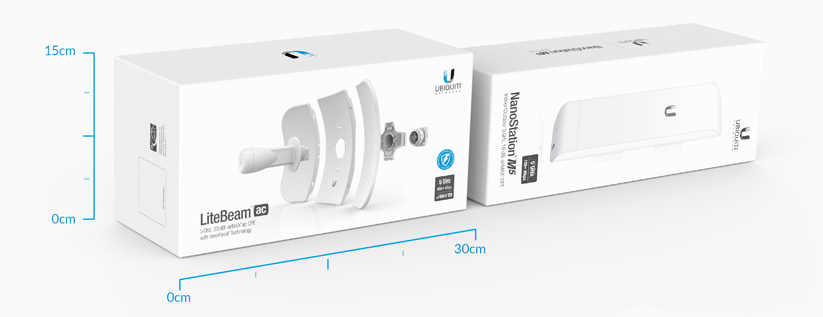Ubiquiti LiteBeam AC– we build radio networks in a new and budgetary way


Events of the past years had a strong impact on all those involved in dollar imports.
Within a few months, even the most inexpensive radio access solutions became twice as expensive in rubles. Fortunately, today we have the opportunity to purchase a new integrated product Ubiquiti for building networks of low density - LiteBeam AC at the pre-crisis price.
Consider this solution, positioned as a point-to-point channel or a low-density sector, and costing less than $ 65 for a subscriber device and less than $ 100 for a basic device with an integrated antenna.
We all know the traditional point-to-multipoint network construction for Ubiquiti: Rocket ac with a sector antenna and NanoBeam ac, PowerBeam ac for subscribers, depending on the distance.
This solution provides predictable performance, capacity up to 160-200 subscribers per four-sector base station.
However, when installing individual sectors or base stations in places with low subscriber density, the cost of a rocket ac and a sector antenna turns out to be very significant, and the antenna size imposes certain requirements on the installation sites — you cannot easily mount it on a simple lighting pole or a roof of a building.
What to do in places with low density of subscribers?
To solve this problem, Ubiquiti offers a set of LiteBeam ac equipment: a base station integrated into the antenna and a subscriber station with a parabolic antenna.
The name of the new Ubiquiti equipment line contains the word “Lite” - the system is really lightened, both by the weight of the equipment (less than half a kilogram at the base station) and by its cost.
So what are we losing about the full-fledged rocket ac?
First, LiteBeam ac ap does not have AirPrism technology (like the rocket ac lite), which we talked about. That is, the device does not have additional means of dealing with out-of-band interference, which, in principle, is logical: it is not intended for use in residential communication facilities.
The second difference is the 2 db lower transmitter power and lower base station antenna gain.
However, lower power and base station antenna can be compensated by higher antenna gain of the subscriber set, at a price lower than that of the younger NanoBeam, LiteBeam offers 23 dB antenna instead of 16 dB and can compete with NanoBeam 19 for overall system gain.
The third difference can be considered half the amount of memory than a rocket ac, however, in the bridge mode, even 64 MB is easily enough for 30-35 subscribers.
Another difference is the lower power of a regular Litebeam ac power injector, which does not allow installing AirGateway.
Consider the basic parameters of the LiteBeam ac network in comparison with the classical solution of similar energy for a network of low-medium density.
| Rocket ac lite + AM-5G19-120 | NanoBeam 19 | LiteBeam AC | LiteBeam AC ap | |
| Speed in Mbit radio channel | 867 | 867 | 867 | 867 |
| Output power at minimum / maximum dbm modulation | 27/22 | 26/22 | 25/21 | 25/21 |
| DB antenna gain | nineteen | nineteen | 23 | sixteen |
| Cost of dollars | 150 + 142 | 102 | 64 | 93 |
| The cost of a set of 80 subscribers usd | (150+ 142) * 3 + 102 * 80 = 9036 | 93 * 3 + 64 * 80 = 5399 | ||
• In practice, you need to remember to add a switch or router for linking sectors and lightning protection.
We see that for significantly less (more than one and a half times) than in the NanoBeam AC line, we get significantly more antenna gain. Moreover, unlike the AirGrid or LiteBeam, which is similar in form, the system uses both polarizations, and the size of the system in a disassembled state does not exceed the dimensions of the box with Nanostation M.
')
Conclusion
The new product LiteBeam AC- improved and at the same time more budget version of the familiar AirGrid. The system acquired a second polarization, support for the AC standard and at the same time kept the minimum cost. The ability to build a point-to-point channel with a capacity of more than 200 Mbit for only $ 128 is a good suggestion for connecting country villages and single households, and Litebeam ac ap is a compact and inexpensive solution for distributing radio access to the village.
The advantages of a new device are:
Reduced cost relative to existing solutions (one and a half times)
More convenient than AirGrid and Nanostation, mount (ball, like the NanoBeam)
Very modest base station clearance
Of the significant drawbacks can be noted except that the included power injector of low power, which does not allow the use of AirGateway, and the lack of a version of the access point with AirPrism technology.
Source: https://habr.com/ru/post/279541/
All Articles